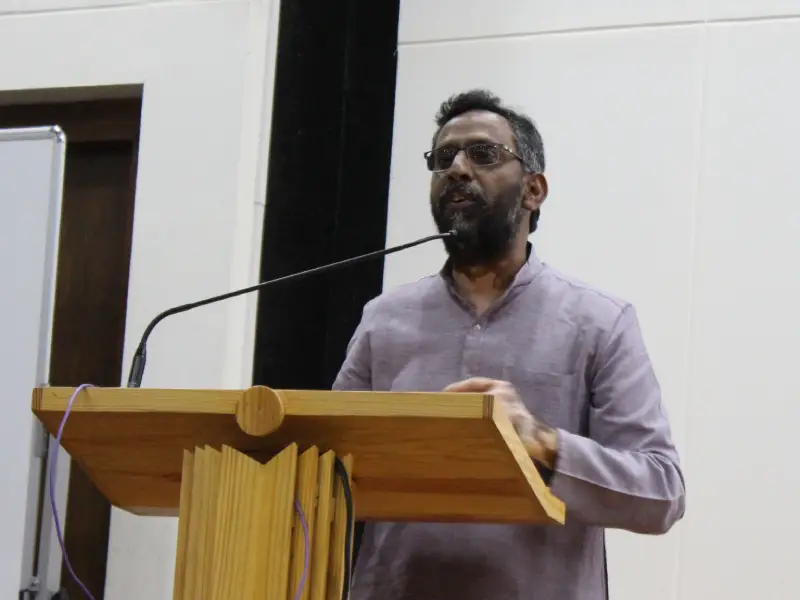IIT Hyderabad Director pitches for `Bag Valve Mask’ as alternative for ventilators
By Newsmeter Network Published on 30 March 2020 1:33 PM GMT
Hyderabad: Director of Indian Institute of Technology Hyderabad (IITH) Professor B.S. Murty on Monday called upon Centre to consider adopting ‘Bag Valve Mask’ as an alternative to ventilators for treating COVID-19 patients.
Prof. B.S. Murty, Director, IIT Hyderabad, and Prof. V. Eswaran, Department of Mechanical and Aerospace Engineering, IIT Hyderabad said the conventional ventilators are expensive, hard to produce, and not portable.
The two luminaries said ‘bag valve masks’ are small devices, which are used to deliver breathing support in emergency situations that are inexpensive, easy to produce, and portable.
According to them, of the 15 percent COVID-19 affected patients; five percent would likely develop respiratory difficulties for which ventilators for assisted breathing will become necessary. Bag valve mask, which is often called by the propriety name of ‘Ambu Bag,’ is used for resuscitation in emergency situations.
The Professors noted that while ‘bag valve mask’ is currently hand-powered and therefore not suitable for continuous use as a ventilator, it would be easy to design a similar device powered by an electrical source, which could be a car battery, apart from the conventional power supply. It could be made portable and therefore adopted in villages and other areas without a power supply.
“Our estimate of the cost is that it can be manufactured for less than Rs 5000, or one-hundredth of the cost of a conventional machine. The cost of manufacturing 6 million of these devices will be probably less than that of the inadequate number of 60,000 conventional machines”, they said.
The cost is so low that it can be considered as a single-use device that will be given over to a single patient and never used again. It needs to be manufactured, however, on an industrial scale, in millions, within a short time of a few months. There have been several designs proposed within India itself, with IIT Hyderabad having at least one proposed design.
“In the past few weeks, many countries have come up with this idea of manufacture of low-cost ventilators and have even started competitions where the winning the design would be declared open-source, which are not patented and can be given free for anyone to adopt. Several designs are already available for 3-D printing, and so can be manufactured on a small scale on a 3-D printer”, they said.
However, Prof. B.S. Murty and Prof. V. Eswaran also cautioned that while this was reassuring, there were some caveats involved.
“These designs are untested and uncertified. Even if inexpensive, the designed devices should be capable of continuous and faultless 24x7 operations for at least one month – which requires very high performance both of the design and the manufactured components. While 3-D printing could be part of the manufacturing solution, conventional manufacturing may be much more effective for making the millions of devices in the most rapid and cost-effective way,” they said.
Further, Prof. B.S. Murty and Prof. V. Eswaran said they are proposing that the Government of India through the Department of Science and Technology and Defence Research and Development Organization, or some other nodal organization should constitute a highly empowered task force, which will start the production of these low-cost ventilators, within a maximum time-frame of two months.
The production rate thereafter would need to be of several lakh units per week, so the preparation has to be done at a war-footing, under the direct scrutiny of the highest levels of Government.
The Professors said that assuming a low 6 percent infection rate, in case COVID-19 advancement in India continues, in the Indian population of 1.3 Billion that would mean that around 80 million people would get affected.
Of these 80 million, at least 5 percent (4 million patients) would require ventilators. Each of these 4 million patients would need the ventilators for around 21 days, thereby blocking that machine for at least that amount of time.
“Therefore, the total number of ventilators would barely be 1 lakh devices - at a time when millions of machines may be needed. We cannot depend on the conventional ventilators for a solution to this crisis,” concluded the duo.
